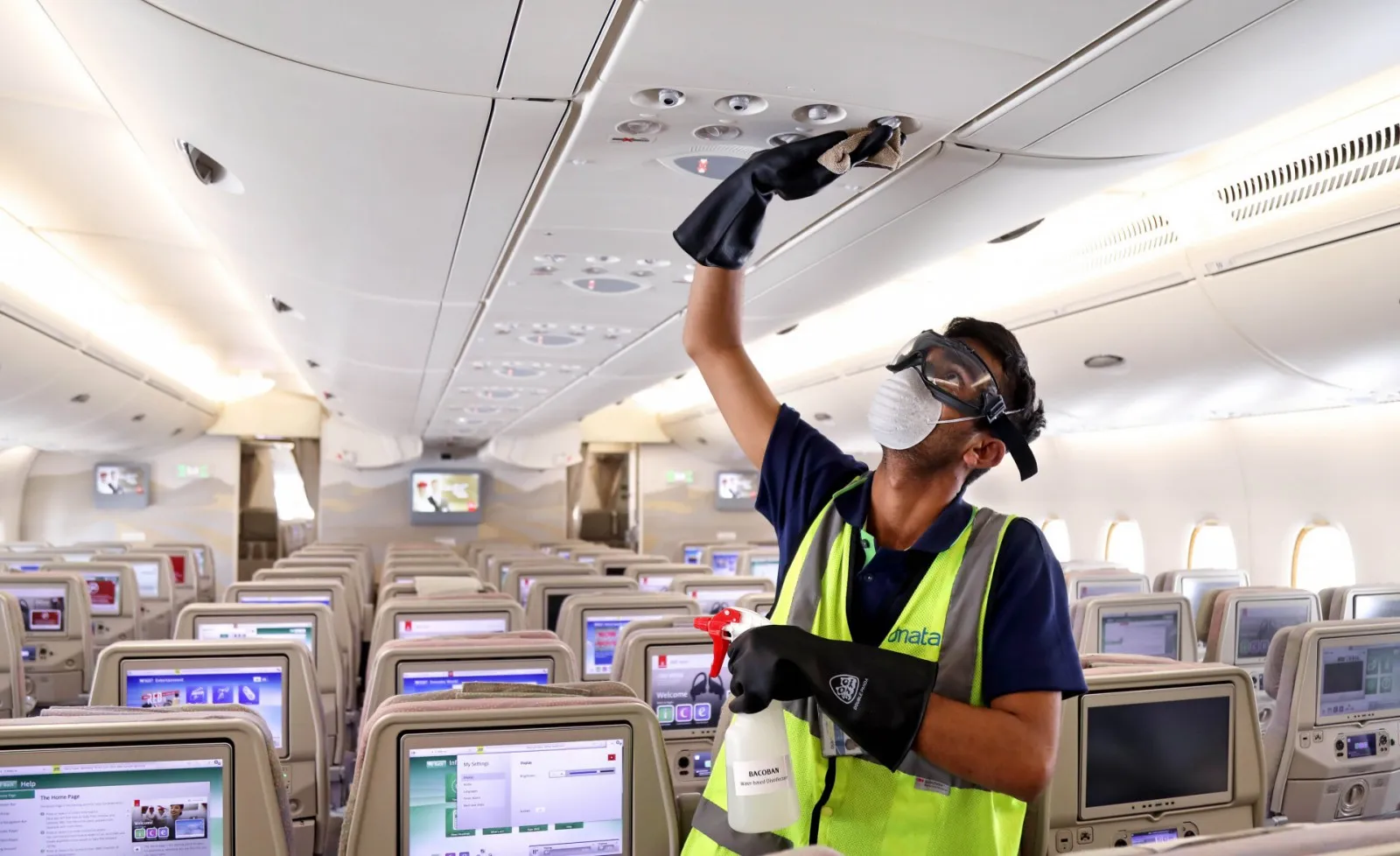
FAA warns airlines of disinfection safety risks
Nov 14, 2020

The Federal Aviation Administration has issued a warning to airlines regarding potential safety risks associated with the disinfection processes used during the COVID-19 pandemic. While enhanced cleaning protocols are vital for passenger safety, the FAA cautioned that certain chemicals and methods could pose hazards to both crew and passengers if not applied correctly. The agency emphasized the importance of following manufacturer guidelines for disinfection products and ensuring adequate ventilation during the cleaning process. This advisory aims to strike a balance between maintaining a sanitary environment and protecting the health and safety of everyone on board.
The Federal Aviation Administration (FAA) has recently issued warnings to airlines regarding the safety risks associated with disinfection processes. As the aviation industry navigates post-pandemic challenges, maintaining the health and safety of passengers and crew has never been more critical. However, the methods used for disinfection can pose significant hazards if not managed properly. Here, we will explore the FAA's warnings, the risks involved, and best practices for airlines to ensure a safe environment for everyone on board.
Understanding Disinfection Safety Risks
Airlines have implemented various disinfection protocols to combat the spread of COVID-19 and other pathogens. These protocols often involve the use of chemical disinfectants, which can be effective in killing germs but also introduce safety concerns. The FAA has identified several risks associated with these practices, including:
- Chemical Exposure: Many disinfectants contain harsh chemicals that can be harmful to both passengers and crew if inhaled or if they come into contact with skin.
- Inadequate Ventilation: Disinfecting aircraft in poorly ventilated areas can increase the concentration of harmful chemicals in the cabin, posing health risks.
- Improper Application: If disinfectants are not applied correctly, they may not effectively eliminate pathogens, leading to a false sense of security.
The Importance of Proper Disinfection Practices
To mitigate the risks associated with disinfection, airlines must adhere to best practices that prioritize safety. The FAA recommends the following measures:
- Training Staff: Ensure that all personnel involved in the disinfection process receive thorough training on the proper use of disinfectants, including safety precautions and emergency procedures.
- Using Approved Products: Airlines should utilize only FAA-approved disinfectants that are effective and safe for use in aircraft.
- Implementing Effective Ventilation: Enhance cabin ventilation during the disinfection process to reduce chemical concentrations and improve air quality.
Disinfection Safety Measures in Action
Many airlines are already adopting innovative solutions to enhance their disinfection protocols. The following table outlines some of the leading practices being implemented across the industry:
| Airline | Disinfection Method | Safety Measures |
|---|---|---|
| Airline A | Electrostatic Spraying | Trained staff and real-time air monitoring |
| Airline B | UV-C Light Technology | Regular maintenance checks and safety gear |
| Airline C | Fogging Disinfectants | Strict ventilation protocols and protective equipment |
The Role of Technology in Disinfection
Technological advancements are playing a crucial role in enhancing disinfection processes in the aviation industry. Airlines are increasingly investing in innovative technologies to improve safety and efficiency. Some notable developments include:
- Automated Disinfection Systems: These systems can efficiently disinfect cabins with minimal human intervention, reducing the risk of chemical exposure.
- Real-Time Monitoring Tools: Advanced sensors can monitor air quality and chemical levels in real-time, ensuring that safety standards are maintained.
- Data Analytics: Utilizing data analytics can help airlines assess the effectiveness of their disinfection practices and make data-driven decisions to enhance safety.
Conclusion: Commitment to Safety
The FAA's warnings regarding disinfection safety risks underscore the importance of maintaining high safety standards in the aviation industry. As airlines continue to innovate and adapt to the challenges posed by the pandemic, the focus must remain on ensuring the health and well-being of all passengers and crew members. By following best practices and leveraging technology, airlines can create a safe flying environment while effectively managing the risks associated with disinfection.
Ultimately, the commitment to safety and health in aviation is a shared responsibility. Passengers should remain informed and vigilant, while airlines must prioritize transparent communication about their disinfection protocols. Together, we can navigate the challenges of air travel in a post-pandemic world, ensuring safety and confidence for all who take to the skies.
Related Articles

Explore Thailand: The Best Islands to Visit for Paradise, Adventure, and Relaxation

The Ultimate Guide to the Best Islands in Thailand for Your Next Getaway

Do babies need passports? How to get a passport for a newborn

How to get a U.S. passport fast: here’s how to expedite the process

What is Mobile Passport Control: 5 reasons why you should use it

SENTRI vs. Global Entry: A detailed guide

Do you need a passport to go to the Bahamas? Let’s find out

Do you need a passport to go to Mexico? A detailed guide

Do you need a passport to go to Canada? We got the answer

Do You Need a Passport for a Cruise: An Essential Travel Guide

Booster Seat Requirements: All the Rules to Follow in Your Rental Car

What Are the World’s Most Powerful Passports, and How Does Yours Rank?

How to Take a Passport Photo at Home: A Helpful Guide

You've got to have heart! Southwest's new livery

Your opinion: Should water be free on low cost carriers?

Young women bolder than guys as solo travellers
